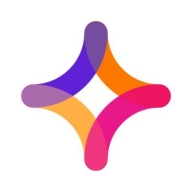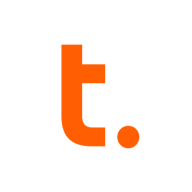

Teradata and Jitterbit Harmony are both in the data management and integration domain. Teradata is favored for its enterprise-grade analytics and scalability, whereas Jitterbit Harmony stands out for seamless data integration and faster implementation.
Features: Teradata provides powerful data warehousing and complex query features, enabling large-scale analytical tasks. Its massively parallel processing architecture ensures quick execution of complex queries. Built-in tools like FastLoad and MultiLoad allow efficient data handling. Jitterbit Harmony offers user-friendly integration with pre-built templates and connectors, simplifying data synchronization. It facilitates rapid implementation with its intuitive drag-and-drop mapping interface and supports effective monitoring through its web console.
Room for Improvement: Teradata could enhance its cloud solutions to better compete with modern cloud-native platforms. Improving user interface elements to simplify its complex setup processes and ensuring more comprehensive support for hybrid environments are potential areas for growth. Jitterbit Harmony may benefit from expanding its advanced analytical capabilities and strengthening security features for more sensitive data exchanges. It's also essential to optimize its cost scaling for larger operations and enhance API support for broader data source connections.
Ease of Deployment and Customer Service: Jitterbit Harmony's cloud-based deployment is noted for its swift setup and reliable support, allowing businesses to achieve integration tasks quickly. Its customer service is recognized for rapid response times and user assistance. On the other hand, Teradata’s deployment often involves more substantial on-premise resources, potentially leading to longer setup durations, but offers extensive support geared toward enterprise solutions.
Pricing and ROI: Teradata generally comes with a higher initial cost reflecting its advanced capabilities and scalability geared toward large data volumes, promising long-term benefits. Its comprehensive analytics yield a significant return on investment over time. Jitterbit Harmony provides a more cost-effective entry point with quicker ROI due to its lower upfront expenditure and rapid deployment capabilities, ideal for businesses requiring fast data integration without heavy analytics requirements.
The technical support from Teradata is quite advanced.
Customer support is very good, rated eight out of ten under our essential agreement.
This expansion can occur without incurring downtime or taking systems offline.
Scalability is complex as you need to purchase a license and coordinate with Teradata for additional disk space and CPU.
I find the stability to be almost a ten out of ten.
The workload management and software maturity provide a reliable system.
Unlike SQL and Oracle, which have in-built replication capabilities, we don't have similar functionality with Teradata.
Initially, it may seem expensive compared to similar cloud databases, however, it offers significant value in performance, stability, and overall output once in use.
Teradata is much more expensive than SQL, which is well-performed and cheaper.
The data mover is valuable over the last two years as it allows us to achieve data replication to our disaster recovery systems.


Jitterbit Harmony is a comprehensive platform for data integration and API management, enabling seamless synchronization and automation across cloud-based and on-premises applications.
Users leverage Jitterbit Harmony to integrate systems like ERP and CRM applications, simplifying complex data workflows and enhancing automation. It supports efficient data migration and ensures smooth connectivity, handling diverse integration needs and helping streamline business processes. Users emphasize its drag-and-drop functionality and extensive templates, which contribute to its robust performance. However, improvements are needed in data mapping, error message clarity, and documentation, especially when dealing with large data volumes.
What are the key features of Jitterbit Harmony?Companies across retail, manufacturing, healthcare, and finance sectors use Jitterbit Harmony to integrate critical applications and automate workflows. In retail, it connects inventory systems with sales platforms, reducing manual effort. Manufacturers sync their ERP systems with supply chain software, optimizing operations. Healthcare organizations integrate patient management systems with insurance databases, streamlining patient care. Financial institutions use it to connect accounting software with banking systems, ensuring real-time financial data exchange.
Teradata is a scalable data analytics platform designed to meet enterprise demands for large-scale data management and processing, focusing on performance, scalability, and security for complex query executions.
As a leading data warehousing solution, Teradata integrates advanced analytics enabling organizations to derive insights from massive datasets. It supports high-volume data workloads with its architecture optimized for analytical queries. Users benefit from its robust scalability, allowing seamless expansion as data grows. Teradata's SQL engine is compatible with a wide range of data types, ensuring flexibility in data analysis. With advanced security measures, it protects sensitive data across various environments, providing peace of mind to users handling critical information.
What are the most important features of Teradata?Teradata is widely used in industries like finance, telecommunications, and healthcare, where data-driven decisions are critical. Companies leverage its robust analytics capabilities to enhance customer experiences, streamline operations, and ensure compliance with regulatory requirements. In these sectors, quick access to data insights can significantly impact competitive advantage.
We monitor all Data Integration reviews to prevent fraudulent reviews and keep review quality high. We do not post reviews by company employees or direct competitors. We validate each review for authenticity via cross-reference with LinkedIn, and personal follow-up with the reviewer when necessary.